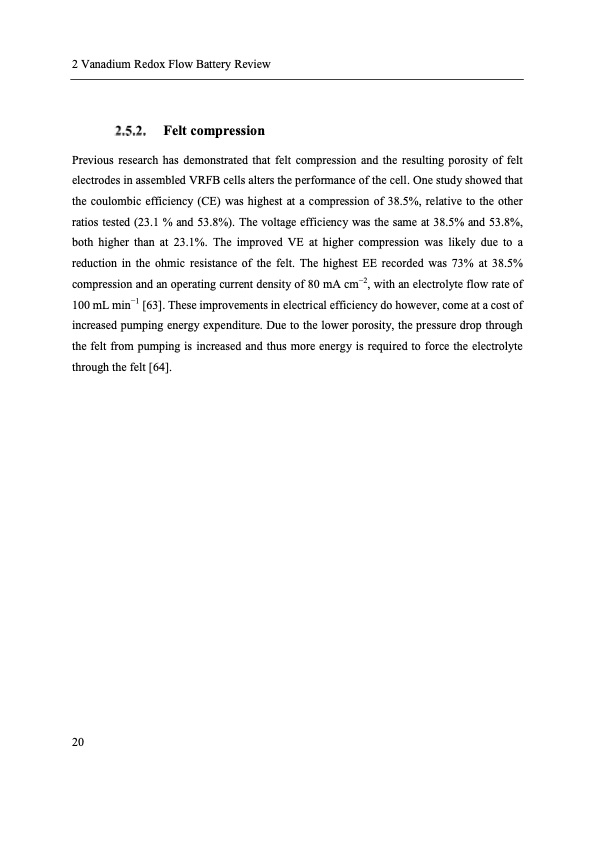
PDF Publication Title:
Text from PDF Page: 032
2 Vanadium Redox Flow Battery Review Felt compression Previous research has demonstrated that felt compression and the resulting porosity of felt electrodes in assembled VRFB cells alters the performance of the cell. One study showed that the coulombic efficiency (CE) was highest at a compression of 38.5%, relative to the other ratios tested (23.1 % and 53.8%). The voltage efficiency was the same at 38.5% and 53.8%, both higher than at 23.1%. The improved VE at higher compression was likely due to a reduction in the ohmic resistance of the felt. The highest EE recorded was 73% at 38.5% compression and an operating current density of 80 mA cm−2, with an electrolyte flow rate of 100 mL min−1 [63]. These improvements in electrical efficiency do however, come at a cost of increased pumping energy expenditure. Due to the lower porosity, the pressure drop through the felt from pumping is increased and thus more energy is required to force the electrolyte through the felt [64]. 20PDF Image | Electron Transfer Kinetics in Redox Flow Batteries

PDF Search Title:
Electron Transfer Kinetics in Redox Flow BatteriesOriginal File Name Searched:
electron-transfer-flow-batteries-thesis.pdfDIY PDF Search: Google It | Yahoo | Bing
Salgenx Redox Flow Battery Technology: Salt water flow battery technology with low cost and great energy density that can be used for power storage and thermal storage. Let us de-risk your production using our license. Our aqueous flow battery is less cost than Tesla Megapack and available faster. Redox flow battery. No membrane needed like with Vanadium, or Bromine. Salgenx flow battery
| CONTACT TEL: 608-238-6001 Email: greg@salgenx.com | RSS | AMP |